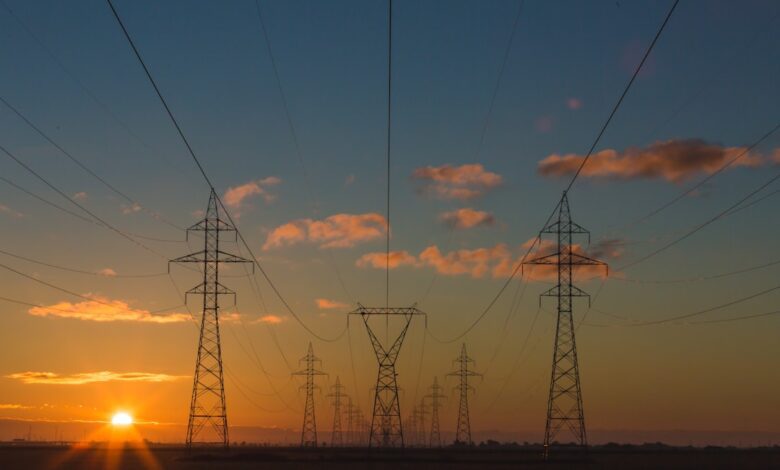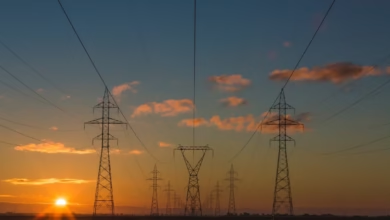Navigating the Energy Transition: Embracing Renewables, Innovations, and Challenges for a Sustainable Future

As the world grapples with the pressing need to combat climate change and reduce reliance on fossil fuels, the rise of renewable energy sources has emerged as a beacon of hope. Solar, wind, and hydrogen power are transforming the energy landscape, offering sustainable alternatives that harness the planet's natural resources. Governments across the globe are stepping up to incentivize this transition, implementing policies that encourage investment in clean energy technologies. However, the journey to a greener future is not without its challenges, particularly in the realm of energy storage—an essential component for managing the intermittent nature of renewable resources.
In addition to renewable energy, the future of nuclear power remains a vital topic of discussion in the quest for a low-carbon world. Meanwhile, traditional oil and gas companies are adapting their strategies to align with changing consumer preferences and regulatory pressures. The rise of electric vehicles further underscores the shift away from fossil fuels, presenting both opportunities and challenges for the energy market. As energy prices fluctuate, the economic impacts ripple through industries and households alike, highlighting the urgency of innovation in energy efficiency measures. This article delves into these interconnected themes, exploring the advancements and obstacles that shape our path toward a sustainable energy future.
- 1. **Harnessing Nature's Power: Solar, Wind, and Hydrogen Energy in the Modern Era**
- 2. **Policy and Progress: Government Incentives Driving the Clean Energy Revolution**
1. **Harnessing Nature's Power: Solar, Wind, and Hydrogen Energy in the Modern Era**
In the modern era, harnessing nature’s power through solar, wind, and hydrogen energy has emerged as a cornerstone of the global transition towards sustainable energy systems. Solar energy, captured through photovoltaic cells, has experienced exponential growth in efficiency and affordability over the past decade. Technological advancements have reduced the cost of solar panels, making them accessible to both residential and commercial users. As a result, many governments are implementing incentives such as tax credits, rebates, and feed-in tariffs to encourage the adoption of solar technologies, leading to a significant increase in installed capacity worldwide.
Wind energy, another vital component of the renewable energy landscape, has similarly benefited from technological innovation. Larger and more efficient wind turbines are being deployed both onshore and offshore, allowing for greater energy capture and reduced costs per megawatt-hour. Countries with favorable wind conditions are investing heavily in wind farms, with governments providing financial support through grants and long-term power purchase agreements, thereby facilitating the transition to cleaner energy sources.
Hydrogen energy, often regarded as the fuel of the future, is gaining traction as a versatile energy carrier. It can be produced through various methods, including electrolysis powered by renewable sources, which offers a pathway to decarbonize sectors that are hard to electrify, such as heavy industry and transportation. Governments are beginning to recognize hydrogen’s potential and are establishing frameworks for research, development, and infrastructure investment. Initiatives include funding pilot projects and creating regulatory environments that promote hydrogen production and utilization.
Together, these renewable energy sources are reshaping the energy landscape, reducing reliance on fossil fuels, and contributing to global efforts to combat climate change. By harnessing nature’s power, countries can not only meet their energy needs sustainably but also drive economic growth, create jobs, and foster innovation in clean technology.
The global transition to renewable energy sources, such as solar, wind, and hydrogen power, is being propelled by a combination of government incentives, technological advancements, and societal demand for cleaner energy. Governments worldwide are implementing policies to encourage the adoption of renewable technologies. These include tax credits, subsidies, and grants for both consumers and businesses, aimed at reducing the initial costs associated with renewable energy installations. Moreover, many countries have set ambitious targets for carbon neutrality, further driving investments in sustainable energy.
However, one of the significant challenges facing the renewable energy sector is energy storage. As solar and wind energy production is inherently intermittent, effective storage solutions are crucial to ensure a consistent energy supply. Technologies such as lithium-ion batteries, pumped hydro storage, and emerging solutions like hydrogen storage are being explored to address this issue. The development of scalable and economically viable storage systems is essential for maximizing the potential of renewables and providing reliability in energy supply.
In parallel, nuclear energy remains a critical component of the low-carbon energy mix. With advances in safety and efficiency, nuclear power can provide a stable and substantial energy source that complements renewable energy generation. As countries seek to reduce their carbon footprints, the role of nuclear energy may expand, especially in regions where renewable resources are limited.
Oil and gas companies are also responding to the energy transition by diversifying their portfolios. Many are investing in renewable energy projects, carbon capture and storage technologies, and electric vehicle infrastructure. This shift not only helps these companies adapt to changing market demands but also positions them as integral players in the clean energy landscape.
Electric vehicles (EVs) are gaining traction as a means to reduce fossil fuel dependency. As battery technology improves and charging infrastructure expands, EVs offer a cleaner alternative to traditional gasoline-powered vehicles. Their widespread adoption can significantly lower greenhouse gas emissions, contributing to broader climate goals.
Energy price fluctuations have economic implications that are felt across various sectors. Volatility in oil and gas prices can have ripple effects on transportation, manufacturing, and consumer spending. As the world transitions to renewable energy, stabilizing energy prices through strategic investments and diversification of energy sources will become increasingly important.
Finally, innovations in energy efficiency are playing a vital role in reducing energy consumption and associated costs. From smart grid technologies to energy-efficient appliances, these advancements not only decrease demand but also enhance the overall sustainability of energy systems. The potential for cost savings through improved efficiency presents an opportunity for both consumers and businesses to contribute to a greener future while benefiting economically.
2. **Policy and Progress: Government Incentives Driving the Clean Energy Revolution**
Governments around the world are playing a crucial role in accelerating the transition to clean energy through a variety of incentives and policy measures. These initiatives aim to reduce reliance on fossil fuels, mitigate climate change, and promote sustainable economic growth. One of the most common approaches is the implementation of financial incentives such as tax credits, grants, and subsidies for renewable energy projects. For instance, in the United States, the Investment Tax Credit (ITC) and the Production Tax Credit (PTC) have significantly boosted solar and wind energy installations, respectively, by providing substantial financial support to developers and consumers.
In addition to financial incentives, governments are also setting ambitious targets for renewable energy adoption. Many countries have established legally binding commitments to achieve specific renewable energy percentages within their energy mix. These targets create a regulatory framework that encourages both private and public investments in clean energy technologies. For example, the European Union's Green Deal aims to make Europe the first climate-neutral continent by 2050, driving member states to enhance their renewable energy capacities and improve energy efficiency.
Moreover, governments are investing in research and development to foster innovation in the clean energy sector. By funding research initiatives and supporting public-private partnerships, they are facilitating the advancement of new technologies such as advanced battery storage, hydrogen production, and smart grid solutions. These innovations are crucial for addressing the intermittent nature of renewable energy sources like solar and wind, ultimately improving the reliability and efficiency of clean energy systems.
Additionally, regulatory measures such as renewable portfolio standards (RPS) require utilities to obtain a certain percentage of their energy from renewable sources. These mandates not only stimulate demand for clean energy but also promote competition among energy providers, leading to increased investments in renewable technologies.
Despite the progress made through these incentives, challenges remain. Policymakers must navigate complex issues such as energy storage, grid integration, and the socio-economic impacts of transitioning away from fossil fuels. Nevertheless, the collective efforts of governments worldwide are instrumental in driving the clean energy revolution, paving the way for a sustainable and resilient energy future.
In conclusion, the transition to renewable energy is not just an environmental imperative but a multifaceted opportunity that holds the potential to reshape our global economy and energy landscape. As we harness the power of solar, wind, and hydrogen, we are witnessing the emergence of innovative technologies and solutions that promise to make energy generation cleaner and more sustainable. Government incentives play a crucial role in this transition, fostering investments and encouraging the adoption of renewable sources. However, challenges remain, particularly in energy storage solutions, which are essential for managing the intermittent nature of renewables.
The future of nuclear energy also presents a viable pathway for achieving low-carbon goals, complementing the advancements in renewables. Meanwhile, traditional oil and gas companies are adapting to these shifts, recognizing the necessity of diversifying their portfolios to remain relevant in a rapidly evolving market. The rise of electric vehicles further underscores the move away from fossil fuel dependency, contributing to cleaner urban environments.
As energy prices continue to fluctuate, understanding their economic implications becomes increasingly important. Innovations in energy efficiency present significant potential for cost savings, ensuring that the transition to a sustainable future is not only environmentally sound but also economically viable. Collectively, these elements highlight the complexity and urgency of the energy transition, emphasizing that a collaborative effort across sectors—governments, industries, and consumers—is essential to realize a cleaner, more resilient energy future. The journey ahead is challenging, but with commitment and innovation, the promise of renewable energy can be fully realized, paving the way for a sustainable planet.





